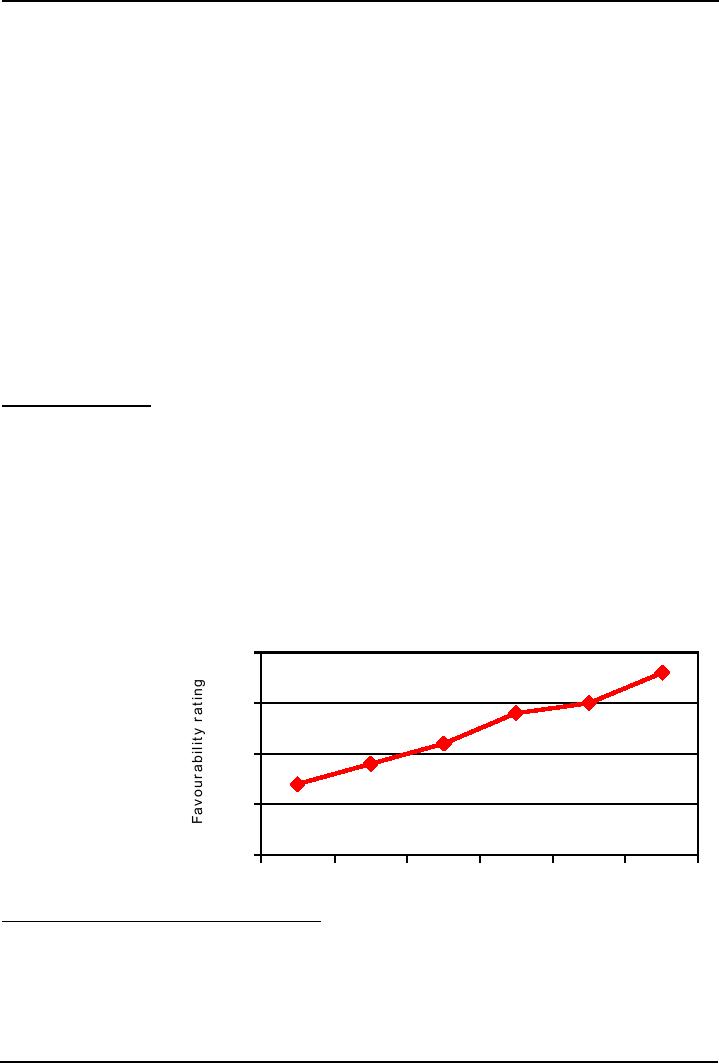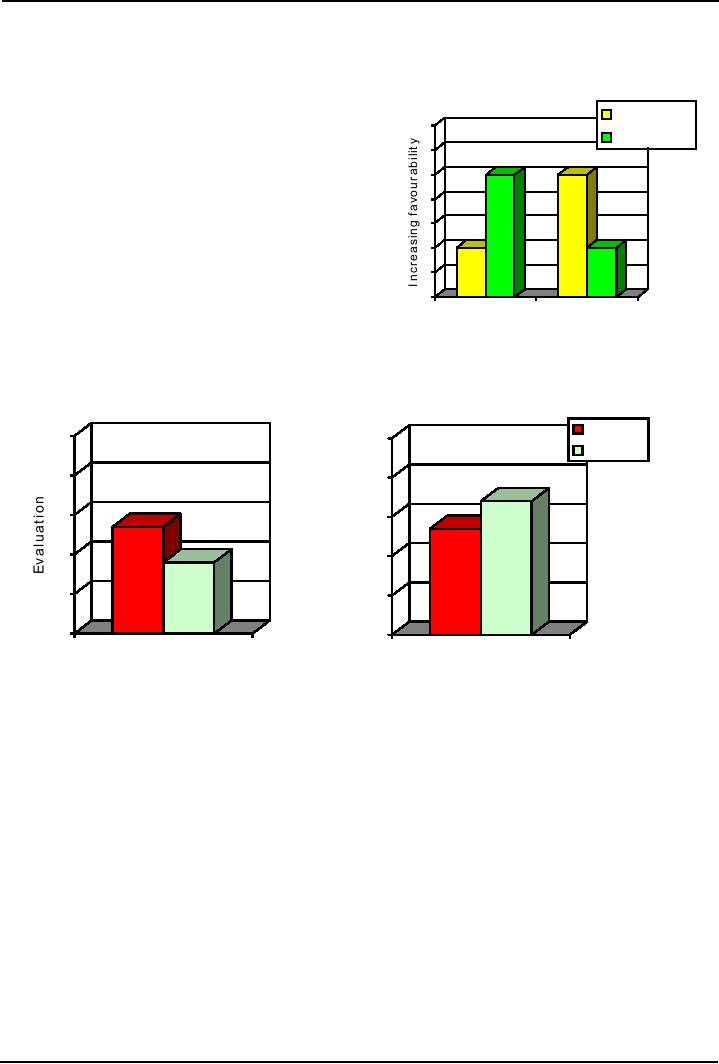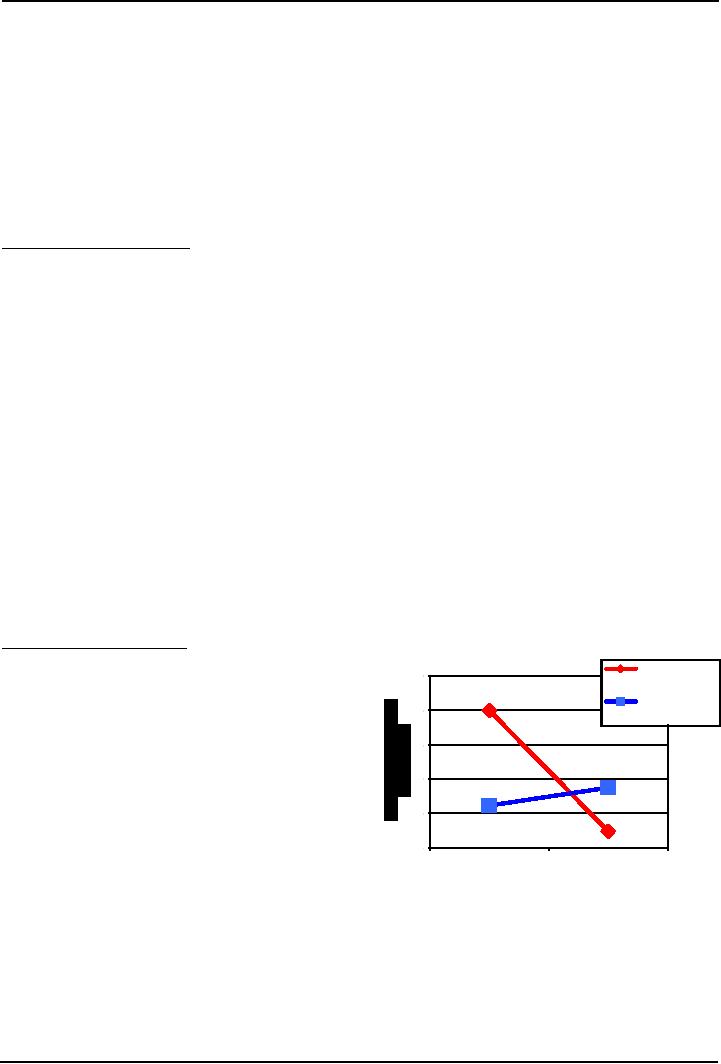 |

Social
Psychology (PSY403)
VU
Lesson
21
ATTITUDE
FORMATION
Aims
To
introduce the main theoretical
approaches to the study of
attitudes
Objectives
Evaluate
the theories of attitude formation and
function
To
understand the concepts through applied
social psychology
lab.
Attitude
formation:
In
the following, different theories about
how attitudes are formed have
been explained.
1)
Mere exposure (Robert
Zajonc, 1968)
The
tendency to develop more positive
feelings toward objects and individuals
the more we are exposed
to
them
No
action or beliefs about the
object required
Familiarity
does not breed contempt!
Experiment
by Zajonc (1968)
`Experiment
to determine how people
learn a foreign
language'
10
Chinese-like characters on computer
screen, 2 seconds
each
Characters
varied in how many times
presented
`These
characters are adjectives -
are they positive or
negative?'
The
results showed that the
characters presented more often
generated a more positive
attitude in
the
participants. The Figure 1 displayed
below explains this.
Figure
1:
Frequency
of exposure to previously
neutral
objects
and subsequent liking
4
3.5
3
2.5
2
0
1
2
5
10
25
Another
experiment by Mita, Dermer, &
Knight (1977)
Exposure
frequency
Participants
showed a photo of them and the mirror
image
The
prints were indistinguishable from
each other
Asked
to rate which of two prints
they liked better
We
prefer the mirror print
because this is the view of ourselves we
most often see
Our
friends see the `actual'
view
This
is the reason why we never
like photos of ourselves?
82

Social
Psychology (PSY403)
VU
Figure
2 below illustrates this
experiment.
Liking
for photo and mirror
prints of own
2)
Classical conditioning
Classical
conditioning when a neutral
stimulus is paired with a
stimulus that face
naturally
evokes
an emotional response (Learning
through association)
Participant
Aarther
& Carolyn Staats (1962)
fist time
investigated
7
Friend
classical
conditioning in association with
attitude.
6
But
does this occur with social
groups?
The
magnitude of the effect was
not great, suggesting
5
classical
conditioning may contribute
to, but not
fully
4
explain,
affective components of attitude
formation
3
An
even stronger effect when aversive
stimuli paired
2
with
nonsense words (Cacioppo,
Marshall-Goodell,
Tassinary,
& Petty, 1992)
1
This
suggests that classical
conditioning is a more
0
powerful
determinant of attitude formation
when little Actual
print Mirror print
knowledge
is available about the attitude
object (e.g., different racial
groups?)
Figures
3 and 4 displayed below reflect the
effect of pairing positive and
negative words with
different
nationalities:
Study by Staats and Staats
(1958)
Swedish
5
5
Dutch
4
4
3
3
2
2
1
1
0
0
Dutch
paired with
negative
Dutch
paired with
positive
words/Swedish
paired with
words/Swedish
paired with
positive
words
negative
words
Subliminal
conditioning
Classical
conditioning that occurs in the
absence of conscious awareness of the
stimuli
Krosnick
et al. (1992) showed college
students slide photos of a stranger
going about her daily
activities
Preceded
by very brief (13/1000 of a
second) subliminal presentations of photos
inducing positive
and
negative emotions
Those
exposed to the positive photos reported
more positive attitude toward the
stranger.
3)
Operant conditioning
Operant
conditioning occurs where behaviour is
strengthened following rewards and
weakened
following
punishments. For example, s student may
develop a positive attitude to
maths if praised for
efforts,
but his efforts remain
unnoticed then may stop
taking much interest in the subjects
which may
lead
to deterioration in performance.
Classical
conditioning -----> affective
component
Operant
conditioning -----> behavioural
component
83

Social
Psychology (PSY403)
VU
Can
also develop through the
indirect means of observational
learning (Bandura,
1986). For example,
if
your friend has a car
accident, he will start avoid
driving due to operant conditioning, but
if you
avoid
or dislike driving, it will be the
result of observational learning.
This helps children learn
many
activities
and skills. Also they learn
how to behave in their families and in
their culture
4)
Self-perception theory (Bem,
1965)
We
infer our attitudes from
observing our own behaviours
(i.e., behaviours can cause
attitudes)
Attributional
processes - we attribute our
own behaviour as being
indicative of certain
attitudes
Bem
argued we are more likely to make
attitude inferences when our
behaviour is freely
chosen
Chaiken
& Baldwin's Study
(1981)
The
researchers conducted an Interesting
empirical demonstration of self-perception
theory of
attitude
formation. They first
separated participants into 2 groups:
strong and weak
proenvironment.
Then they induced them to endorse
either relatively pro or
anti statements on a
questionnaire.
The results showed that
the participants who were
induced into
reporting
proenvironment
behavior reported more positive attitude
for environment. However, this
only
occurred
if their initial proenvironment attitude
was weak.
5.
Facial feedback theory
Strack,
Martin, & Stepper (1988) conducted a
study to understand the impact of facial
expression and
movement
on attitude. They showed
cartoons to 3 types of participants;
those who saw cartoons
with
pen
in teeth, pen in lips, and in their no
dominant hand. Later their
attitude toward cartoons was
asked.
Pen
in teeth (like smiling) vs.
Pen in lips (prevents
smiling)
Pen
in teeth -----> greater liking of the
attitude object
(cartoon)
This
indicates facial feedback hypothesis.
These
results also support the vascular
theory of emotions, as described
below.
Vascular
theory of emotion (Zajonc,
1993)
Self-percept
ion of environment al at t it
udes
Weak
prior
Smiling
causes facial muscles to
increase the flow of
air-
attitude
cooled
blood to the brain producing
pleasant mood.
Strong
prior
attitude
On
the contrary, frowning decreases
blood flow
promoting
negative mood. In 1989 the
researchers
showed
that even pronouncing vowel
sound than
other
mimicking frowning (u)
characters can
decrease
blood flow.
Other
body postures, sitting
upright at a normal-
height
table or sitting slumped over at a
short-legged
table
determined levels of positive
attitude (Sabine
P
r oe nv i r onme nt a l
A
nt i e nv i r onme nt a l
Stepper
& Strack, 1993)
Induc
e d re po rt s o f o wn be ha v io ur
6.
Functional
Attitudes
formed (and change) based on the
degree to which they satisfy
different psychological
needs
e.g.,
changing from liking to
disliking a brand of coffee
because of anti-environmental
practices
Active
vs. passive attitude
theory
84

Social
Psychology (PSY403)
VU
Applied
Social Psychology
Lab
Performing
actions associated with happiness
cause us not only to feel
happier but also to perceive
other
objects
in our environment
favourably
Is
there any wisdom in parents
admonishing their children to
straighten their posture and to
avoid
slouching?
Reading
·
Franzoi,
S. (2003). Social
Psychology. Boston:
McGraw-Hill. Chapter 6.
85
Table of Contents:
- INTRODUCTION TO SOCIAL PSYCHOLOGY:Readings, Main Elements of Definitions
- INTRODUCTION TO SOCIAL PSYCHOLOGY:Social Psychology and Sociology
- CONDUCTING RESEARCH IN SOCIAL PSYCHOLOGY:Scientific Method
- CONDUCTING RESEARCH IN SOCIAL PSYCHOLOGY:Evaluate Ethics
- CONDUCTING RESEARCH IN SOCIAL PSYCHOLOGY RESEARCH PROCESS, DESIGNS AND METHODS (CONTINUED)
- CONDUCTING RESEARCH IN SOCIAL PSYCHOLOGY OBSERVATIONAL METHOD
- CONDUCTING RESEARCH IN SOCIAL PSYCHOLOGY CORRELATIONAL METHOD:
- CONDUCTING RESEARCH IN SOCIAL PSYCHOLOGY EXPERIMENTAL METHOD
- THE SELF:Meta Analysis, THE INTERNET, BRAIN-IMAGING TECHNIQUES
- THE SELF (CONTINUED):Development of Self awareness, SELF REGULATION
- THE SELF (CONTINUE…….):Journal Activity, POSSIBLE HISTORICAL EFFECTS
- THE SELF (CONTINUE……….):SELF-SCHEMAS, SELF-COMPLEXITY
- PERSON PERCEPTION:Impression Formation, Facial Expressions
- PERSON PERCEPTION (CONTINUE…..):GENDER SOCIALIZATION, Integrating Impressions
- PERSON PERCEPTION: WHEN PERSON PERCEPTION IS MOST CHALLENGING
- ATTRIBUTION:The locus of causality, Stability & Controllability
- ATTRIBUTION ERRORS:Biases in Attribution, Cultural differences
- SOCIAL COGNITION:We are categorizing creatures, Developing Schemas
- SOCIAL COGNITION (CONTINUE…….):Counterfactual Thinking, Confirmation bias
- ATTITUDES:Affective component, Behavioral component, Cognitive component
- ATTITUDE FORMATION:Classical conditioning, Subliminal conditioning
- ATTITUDE AND BEHAVIOR:Theory of planned behavior, Attitude strength
- ATTITUDE CHANGE:Factors affecting dissonance, Likeability
- ATTITUDE CHANGE (CONTINUE……….):Attitudinal Inoculation, Audience Variables
- PREJUDICE AND DISCRIMINATION:Activity on Cognitive Dissonance, Categorization
- PREJUDICE AND DISCRIMINATION (CONTINUE……….):Religion, Stereotype threat
- REDUCING PREJUDICE AND DISCRIMINATION:The contact hypothesis
- INTERPERSONAL ATTRACTION:Reasons for affiliation, Theory of Social exchange
- INTERPERSONAL ATTRACTION (CONTINUE……..):Physical attractiveness
- INTIMATE RELATIONSHIPS:Applied Social Psychology Lab
- SOCIAL INFLUENCE:Attachment styles & Friendship, SOCIAL INTERACTIONS
- SOCIAL INFLUENCE (CONTINE………):Normative influence, Informational influence
- SOCIAL INFLUENCE (CONTINUE……):Crimes of Obedience, Predictions
- AGGRESSION:Identifying Aggression, Instrumental aggression
- AGGRESSION (CONTINUE……):The Cognitive-Neo-associationist Model
- REDUCING AGGRESSION:Punishment, Incompatible response strategy
- PROSOCIAL BEHAVIOR:Types of Helping, Reciprocal helping, Norm of responsibility
- PROSOCIAL BEHAVIOR (CONTINUE………):Bystander Intervention, Diffusion of responsibility
- GROUP BEHAVIOR:Applied Social Psychology Lab, Basic Features of Groups
- GROUP BEHAVIOR (CONTINUE…………):Social Loafing, Deindividuation
- up Decision GROUP BEHAVIOR (CONTINUE……….):GroProcess, Group Polarization
- INTERPERSONAL POWER: LEADERSHIP, The Situational Perspective, Information power
- SOCIAL PSYCHOLOGY APPLIED: SOCIAL PSYCHOLOGY IN COURT
- SOCIAL PSYCHOLOGY APPLIED: SOCIAL PSYCHOLOGY IN CLINIC
- FINAL REVIEW:Social Psychology and related fields, History, Social cognition